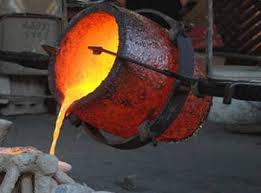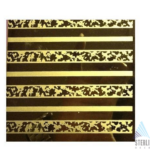Ferrous casting is one of the most important downstream manufacturing processes wherein effective and high quality metal products are manufactured. It is a process that requires melting and pouring iron or its alloy steels in a prepared mold to produce various products for automobile, construction, aerospace, machine industries. In this article, we’ll look at the various ferrous casting types, the casting process, as well as the advantages and uses of ferrous metals in casting.
To know more about ferrous casting- https://www.indianmetal.solutions/
What Is Ferrous Casting?
Ferrous casting is defined as the process of forming metallic objects from iron-based alloys including the most common of which are cast iron and steel. Fermarius in the Latin language means Iron hence the word ferrous is derived. Ferrous metals Iron bearing metals are distinguished by a high work strength, which is especially true when tensile loads are applied, and magnetization and are widely applicable in structural and industrial fields.
Casting Ferrous Metals:
Cast Iron
Cast iron is categorized as an iron-carbon that is enriched with carbon of about 2 to 4. Because of these attributes there is always good castings quality and fast preparation of dressing. Different cast iron types include the following: o Gray Cast Iron: This is the most commonly used iron cast for machine parts due to its properties that enhance performance, especially on parts that are usually subject to loads like automotive parts, machine lumbar and pipes with vibration damping capacity.
o Ductile (Nodular) Cast Iron: This type of cast iron has spherical graphite structures, which contributes to this iron having better ductility and resistance to impact. It is in great demand due to heavy load application, in the manufactures of gears, crankshafts and hydraulic equipment.
o White Cast Iron: Due to the hardness and abrasive properties of white cast iron, it is used in industries where components undergo extreme wear, for example, in the manufacture of grinding balls and in shot blasting machines.
Steel
Among metals, steel is an iron containing alloy with less than 2% of carbon content as opposed to cast iron. Cast steel is both strong and tough suitable for parts that go through high stresses. There are many types of steel which are suitable for the casting process such as:
o Carbon Steel: This type of steel is very common and serves various purposes such as structural, automotive and construction because of how strong and quite machinable it is.
o Alloy Steel: Optimized alloy steels enhance its properties by including chromium, nickel or manganese among other elements displaying higher mechanical properties such as good resistant to corrosion thus can be used for high end specialist purposes.
The Ferrous Casting Process
As with every engineering process, the ferrous casting process consists of several steps and the following are some of the common steps involved in the future casting of ferrous metals.
Pattern Making
A pattern the shape of the finished product or a copy of that finished object is made in order to create the shape of the cavity of the molding shell. In making patterns either wood, plastic of metal may be used depending on the casting size and shape. The pattern is put in a kit, and pwing sand or other equivalent material is pressed up about it to create the cavity.
Mold Preparation
The first thing is the preparation of a mold by removing the pattern and making a cavity which is the same as the shape of the final product. In other situations, it is possible to insert cores to produce hollow parts in the casting.
Melting the Metal
The ferrous metal is put in a furnace and in most cases its ferrous heads are demetalized using electric arc or induction heating. The liquefied metal is maintained at a set temperature which can differ with the type of alloy and application cast.
Pouring the Metal
After this stage, the metal is now put in a correct temperature whereby it is in its liquid form and then poured in the mold cavity. This process should be performed accurately as it is possible to produce errors that will cause defects to the product such as having porosity or having the mold only partially filled.
Cooling and Solidification.
The liquid metal then hardens inside the surrounding mold within its cavity and takes the shape of the cavity. The cooling rate has to be regulated so as to obtain a casting that has the required mechanical properties in terms of strength as well as hardness.
Shakeout and Cleaning
Taking into consideration that the casting has completed cooling cycles to reclaim the solidified part, the closable mold is unlatched. all additional material such as the gates or risers used in the pouring operation is cut off and the casting is free of sand.
Inspection and Finishing
The casting is visually checked for defects like cracks or cavities, and can be subjected to use of heat or further machining to finalize the actual dimensions and properties. The quality of the casting should also be assessed to determine whether or not the casting satisfies the set requirements.
Advantages of Ferrous Casting
Strength and Durability
Ferrous metals such as steel and cast iron exhibit superiority in strength and durability. Such properties make the ferrous castings useful in industries where heavy-duty parts have to endure high stress, pressure or from impact without breaking apart.
Versatility
Ferrous casting technology makes mass production of intricate as well as large components that other methods cannot achieve. In turn this enables ferrous castings to be used widely across many industries.
Cost Effective for High-Volume Production
After the mold has been done, ferrous casting becomes economical in the mass production of parts and there are no boundaries on how many limites to parts that can be manufactured. This is preferred in those industries where adverse conditions rude more than one piece for example automotive or construction industry.
Applications
Ferrous castings find applications not only in machine parts and tools but also in the manufacture of engine blocks and pipes, which constitutes a wide range of products. The characteristics of the material to use and withstand different mechanical and environmental conditions will ensure its use in modern production.
Ecovision
Ferrous metals are highly recyclable thus being generated environmentally friendly iron metal. Iron and steel scrap has good salvage value and can be remelted for making new castings, which is a step toward sustainability in the industry.
This post was created with our nice and easy submission form. Create your post!





